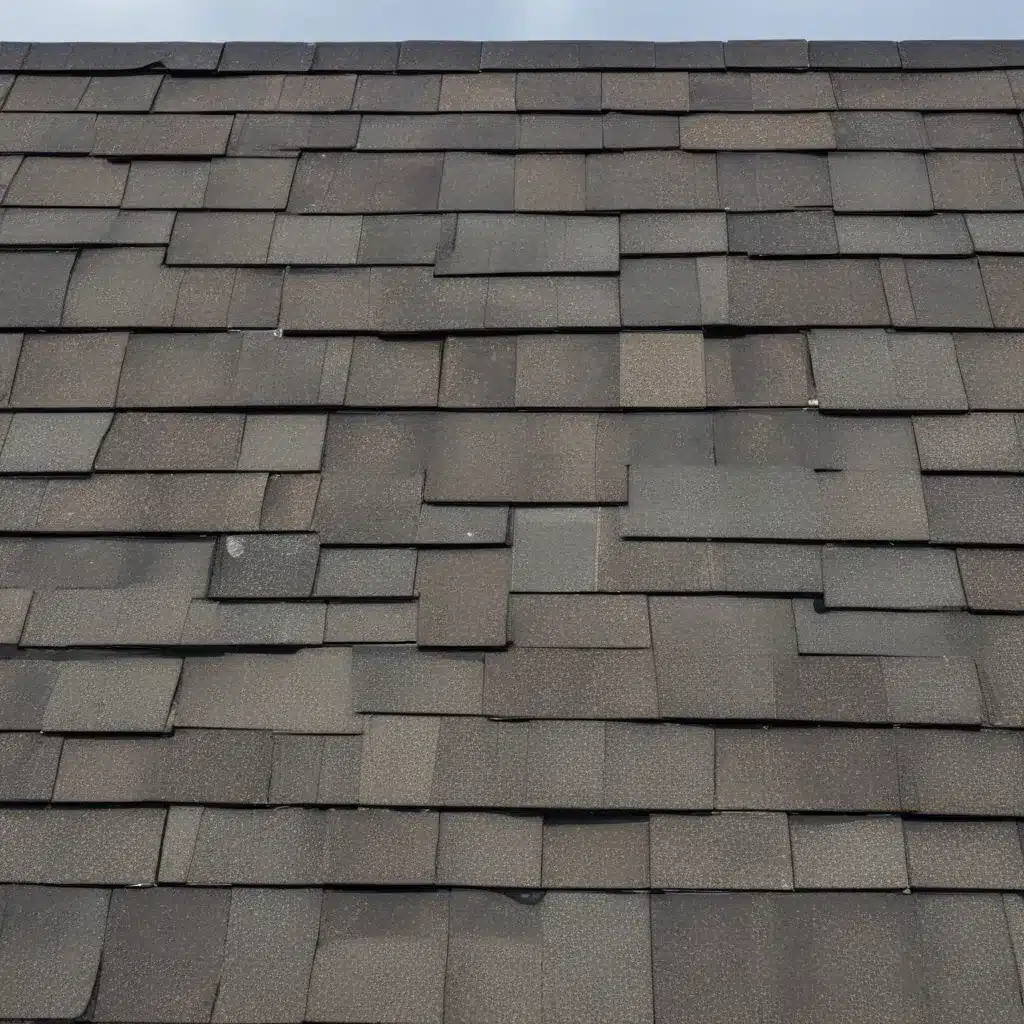
Recognizing the Signs of Hail, Wind, and Rain Damage
As a seasoned roofing professional, I know all too well the devastation that severe storms can bring to homes and businesses. From powerful winds and hail to torrential rains, these weather events can wreak havoc on roofing systems, compromising their integrity and leaving homeowners with costly repairs.
However, identifying storm damage on your roof doesn’t have to be a guessing game. By understanding the telltale signs to look for, you can act quickly to assess the situation, file an insurance claim if needed, and get your roof back to peak condition. In this comprehensive guide, I’ll share my expertise on recognizing various types of storm damage and provide practical tips to help you safeguard your roof against Mother Nature’s wrath.
Identifying Hail Damage
One of the most common and visible forms of storm damage is hail impact. While hail can come in varying sizes, any pieces roughly 1 inch in diameter or larger can cause significant harm to your roof’s shingles and other components.
When examining your roof for hail damage, look for:
Dents and Dings on Shingles: Hailstones leave distinctive black or soft divots on asphalt and composition shingles, similar to the bruising on an apple. Closely inspect your shingles, paying attention to any areas with noticeable impact marks.
Splits and Cracks in Wood Shingles: Hail can cause sharp-edged splits and cracks in wood shingles, often with little deterioration at the edges. You may also notice dents or impact marks along these splits.
Granule Loss: When hail strikes, it can knock off the protective granules embedded in asphalt shingles. This exposes the underlying asphalt and compromises the shingle’s integrity. Check your gutters and downspouts for an accumulation of loose granules.
Damage to Roof Penetrations: Hail’s impact doesn’t stop at the shingles – it can also dent or damage roof vents, flashing, and other roofing components. Inspect these areas carefully for any signs of hail-related harm.
Identifying Wind Damage
High winds accompanying storms can be just as destructive as hail, causing shingles to lift, curl, or completely blow off the roof. Look for these telltale signs of wind damage:
Missing or Lifted Shingles: Shingles that are missing, loose, or peeled back are a clear indicator that strong winds have compromised your roof’s protective layer. These openings leave your home vulnerable to water intrusion.
Creased or Wrinkled Shingles: Powerful gusts can cause shingles to crease, wrinkle, or buckle, compromising their ability to provide adequate coverage and water protection.
Damage to Roof Edges and Flashings: Wind can also target the vulnerable areas around your roof’s edges, ridges, and flashing, leading to cracks, gaps, or detachment.
Identifying Water Damage
While hail and wind can create visible damage, heavy rains and flooding pose their own unique threats to roofing systems. Watch out for these signs of water-related storm damage:
Roof Leaks: Compromised shingles, flashing, or other roof components can allow water to seep into your home, leading to stains, discoloration, or dripping on your ceilings and walls.
Pooling Water: Improper drainage or clogged gutters and downspouts can cause water to accumulate on your roof, which can damage shingles and lead to leaks over time.
Ice Dams: In colder climates, melting snow that refreezes at the roof’s edge can create ice dams, preventing proper drainage and potentially pushing water under shingles.
Collateral Damage as a Clue
While closely examining your roof is important, don’t overlook the potential clues on the ground around your home. Storm damage often leaves behind telltale signs, such as:
Dented Gutters and Downspouts: If your gutters and downspouts are dented, it’s a good indication that hail or debris caused the damage, which could also affect your roof.
Damaged Landscaping: Look for broken tree limbs, scattered debris, or other disruptions to your yard and landscaping – these can suggest the intensity of the storm and the potential for roof damage.
Loose Shingle Granules: If you notice an accumulation of asphalt granules in your gutters or around your downspouts, it’s a sign that your roof has experienced significant wear and tear, likely due to a storm.
Timing is Crucial
When it comes to filing an insurance claim for storm-related roof damage, timing is of the essence. Most policies allow homeowners up to 12 months to report and file a claim, but the sooner you can identify and document the damage, the better.
Insurance adjusters often rely on hail mapping data to determine the extent and timing of a storm, so it’s important to act quickly. Delaying the process may make it more challenging to prove the damage was caused by a specific weather event, rather than general wear and tear.
Partnering with a Trusted Roofing Professional
While examining your roof for storm damage can be done from the ground, it’s always best to have a qualified roofing professional conduct a thorough inspection. They have the expertise to identify even the most subtle signs of damage and can provide guidance on the appropriate next steps, whether that’s filing an insurance claim or proceeding with repairs.
At Roofers in Northampton, we have decades of experience helping homeowners navigate the complexities of storm-related roof damage. Our team of certified experts will work closely with you to assess the situation, document the issues, and ensure a seamless insurance claim and repair process.
Don’t let severe weather catch you off guard. By being proactive and enlisting the help of a trusted roofing partner, you can protect your home, minimize the impact of storm damage, and maintain the long-term integrity of your roof. Contact us today to schedule a comprehensive inspection and get the peace of mind you deserve.

